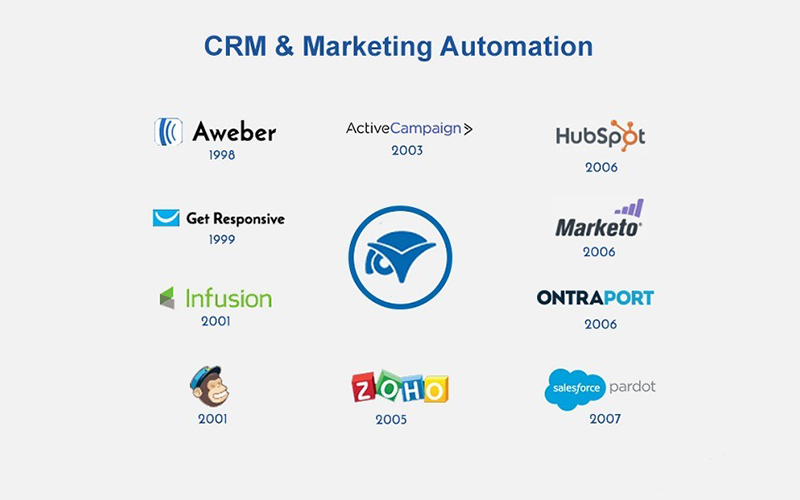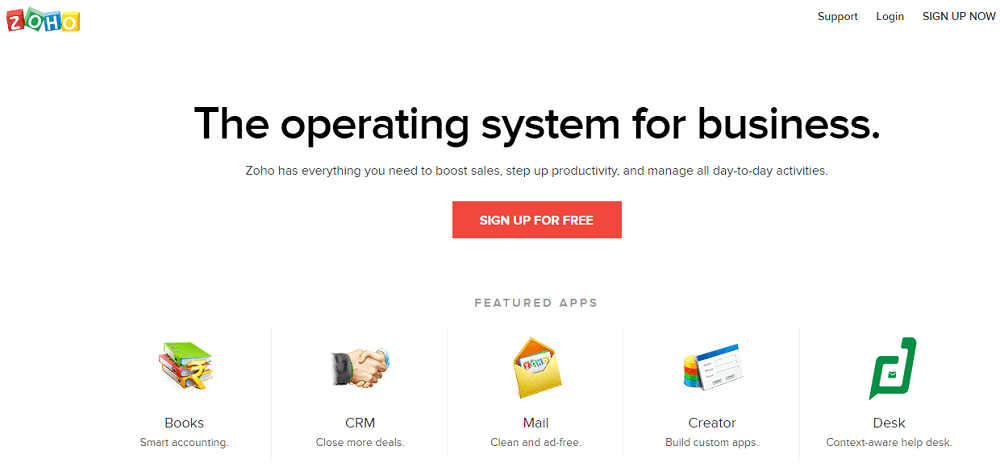According to HubSpot, “Marketing automation refers to the software that exists with the goal of automating marketing actions.”
Many marketing departments perform various repetitive and monotonous tasks. These tasks include, but are not limited to emails, social media, and other website actions. The marketing automation tools make these everyday jobs easier. In nonprofessional terms, marketing automation is all about optimisation. The scope of marketing automation is beyond simply automating the marketing department’s repetitive tasks. In addition, it optimises the time of your staff. It can even hint on which customers your sales team concentrates their endeavours.
Digital marketing automation has its bloodline in email marketing. However, it is way beyond email marketing. Marketing automation aids marketers to restructure various actions like generating, scoring, and nurturing leads, managing link selling, cross-selling and up-selling, customer lifecycle marketing, and others. The efficient implementation of marketing automation technology can effectively increase operational efficiency. The technology helps to grow revenue quicker by cutting your sales cycle, recovering your lead aptitude, and saving you time to focus on other important areas. However, unfortunately, these paybacks can be availed at a giant cost.

1. Infusionsoft
Clate Mask and his brother Eric Martineau, Scott jointly established Infusionsoft in 2001 at Mesa, Arizona. It caters to more than 25,000 customers. Infusionsoft is one of the most successful marketing automation tools for small businesses that already have a strong customer base and a turnover above $100,000.
Infusionsoft, a leading sales and marketing software, supports small business in getting structured, building sales, and saving time. Its user interface is very well designed. Very few marketing automation tools offer order forms, payment processing, execution, and inventory tracking directly inside the tool. Infusionsoft is one of those automation tools. In addition, it allows worldwide tracking, which makes it easy to keep a track of a contact’s behaviour across multiple marketing channels. Besides, a lot of bloggers use this software for email marketing and creating marketing campaigns & funnels.
Infusionsoft expedites the creation and execution of a sales and marketing strategy. It centralizes customer interactions, attracts new leads, meets sales quicker, and automates recurring tasks like a follow-up, contact management, billing, and payment—all from one place.
Infusionsoft charge a unique mandatory launch fee of $1999.

2. ActiveCampaign
Again, this automation tool is the best-fit solution for small businesses having the strength of less than 100. This tool is very reasonable compared to others. You would be amazed to know that it costs a maximum $150 per month. ActiveCampaign provides services like unlimited email sending, CRM and sales automation, onboarding, and unrestricted access to social data.
Though it is very affordable, the automation features that ActiveCampaign provides are robust. The features include sales team notification, cart and form abandonment, visual workflow editor, and web traffic analysis. The interface of this software is so straightforward that anyone can operate it with ease. The reason why ActiveCampaign should be preferred by small businesses is pretty obvious. The platform makes lead generation and warm lead nurturing effortless by excellent CRM and mailing solutions.

3. Hubspot
In 2006, HubSpot was founded by Brian Halligan and Dharmesh Shah at the Massachusetts Institute of Technology (MIT). It was launched in December 2007. Since ages, HubSpot is one of the pioneers in automated digital marketing. It is an inbound marketing software company that helps businesses in modifying their marketing from outbound lead generation to inbound lead generation. It does it by allowing them to “get noticed” by more potential customers in the usual course of the way they shop and learn.
They “get” content marketing.
It provides a full suite of integrated marketing tools that comprise blogging, content management, search engine optimization, social media publishing and monitoring, email marketing, and more. HubSpot is a complete platform for developing marketing effectiveness and marketing competence.
Hubspot does have monthly packages of $200. However, their offerings cost $800/month package for marketing automation and CRM integration that includes only 1,000 contacts. The further cost grows based on the user’s contract requirements.

4. Marketo
Marketo, founded in 2006, launched its first product “Lead Management.” In 2012, Marketo acquired “Crowd Factory.” This acquisition resulted in the benefits of social media marketing capabilities. Finally, the company went public in 2013.
Marketo is easy and influential marketing software that suits an organization having the strength of 100+. It helps marketing and sales professionals drive revenue and develop marketing engagement. Most of the users usually compare this software with Pardot owing to their similar functionality.
Marketo overpowers Pardot in terms of implementation, usability, and design of their platform. Marketo provides the foremost cloud-based marketing software platform for companies of all sizes to develop and maintain engaging customer relationships. It has an outstanding integration with Salesforce. These two tools work effortlessly together through their syncing takes a considerable amount of time.
The packages of Marketo include three standard pricing tiers, at $895, $1,795, and $3,175 per month. Under each tier, various new features are available which may come at hefty prices of an additional $900 – $1,400 per month.

5. Ontraport
Ontraport is again very good for SMBs, the affordability factor is just as important as a feature. It allows accessing the full suite, along with a money-back guarantee only at $600/month. The topmost features of Ontraport include but not limited to two way SMS automation, Landing page A/B testing, ROI tracking, custom reporting dashboard, video hosting, API access for third-party development, task management automation, and lead scoring and routing.
Ontraport holds a wide range of inspiring shopping cart features. These features comprise automatic credit card payment collections and the ability to add cross-sells, upsells, and cart rejection orders.
Ontraport allows storing 25K contacts, managing 100K contacts, and sending 100K emails per month.

Do Not Miss: to Read About Important 5 Essential Marketing Automation Tips for Successful Start-ups
6. Pardot
Pardot belongs to Salesforce. It was jointly founded by Adam Blitzer and David Cummings in 2007. In 2012, Exact Target acquired it for a reported $95 million. Later, Salesforce acquired Exact Target in 2013.
It is a full-featured and user-friendly marketing automation tool. It helps pipelines to pick up the pace and drive sales through social marketing, sales intelligence, email marketing, lead generation, lead management, and more. Other prominent features include segmentation wizard, ROI reporting, email marketing with complete branded templates, real-time sales alerts and CRM integration. It maximizes the efficiency of the sales and marketing teams and ultimately increases revenue.
The standard package provided by Pardot comes at a cost of $1000 per month. The other packages related to advanced analytics, A/B testing, dynamic content costs around $2000 per month. The ultimate package related to API access and custom user roles is of $3000 approx per month.

7. GetResponse
GetResponse Marketing Automation facilitates you to devise flexible processes that sustain your unique business style. Also, can transform your marketing database into a lead scoring activist. It is highly efficient in optimizing the sales funnel. The top features of GetResponse include but not limited to drag and drop visual workflow editor, post-purchase communication, loyalty and reward programs, tracking online activities of subscribers, cutting-edge customer scoring, and others. This platform is very simple to operate; you need to have a full-time CRM manager. Its monthly payment plans are sectioned by list size which starts at $15 per month for unlimited messages to up to 1,000 subscribers.

8. MailChimp
As an email marketing automation tool, MailChimp is a preferred choice for many SMBs.
MailChimp provides enterprise-level automation tools without any hurdles. Its prominent features include but not limited to trigger emails when customers abandon shopping carts, conversion of interested subscribers into customers, re-engaging with existing customers, integration of web services with apps, and others.
There are three pricing plans offers of Mailchimp: Forever Free, Monthly, and Pay As You Go. They also have an alternative designed to fit users’ needs.

9. AWeber
AWeber is an ideal autoresponder platform for small businesses, bloggers, and entrepreneurs. This marketing automation tool is a comfortable process to automate your emails. Its new drag and drop editor is capable to support your email automation requirements. Its prominent features include lead segmentation, web activity tracking, creating invoices, split testing, generating sales reports, and others. AWeber enables you to assemble your list with their opt-in forms. It sends out automated emails to your subscribers. If you want to get started with email marketing, AWeber is the perfect key.

10. Zoho CRM
Zoho Campaigns is an email marketing automation product that helps you create, send, track, and share your email campaigns. Its free services include 12000 emails/month, 2000 subscribers, pre-designed templates, real-time visitor tracking, template library, A/B testing, social sharing, merge tags, sign-up forms, and many more.
Zoho CRM provides a complete view of your sales cycle and pipeline. Zoho. Thereby it enables you to spot trends, marking opportunities, and further, lock more deals. Zoho’s shaped customer relationship management and marketing effectiveness procedures help you build your company into a customer-centric business. Its campaigns are integrated with internal services like Zoho Survey, Zoho CRM, Zoho Forms, Zoho Docs & Zoho Sites, Zoho Creator, and other services like LinkedIn, Shopify, SurveyMonkey, Facebook, Twitter, Eventbrite, Google Analytics, WordPress, Google Apps, and others.

Its service packages are in affordable ranges. $12/user/month package provides services of sales forecasting, reports, and dashboards. A professional package worth $20/user/month provides services of Email integration and social CRM. An enterprise package worth $35/user/month provides services of territory management and custom modules. Further, its CRM Plus package worth $50/user/month provides services of email marketing, help desk, and customer surveys.





